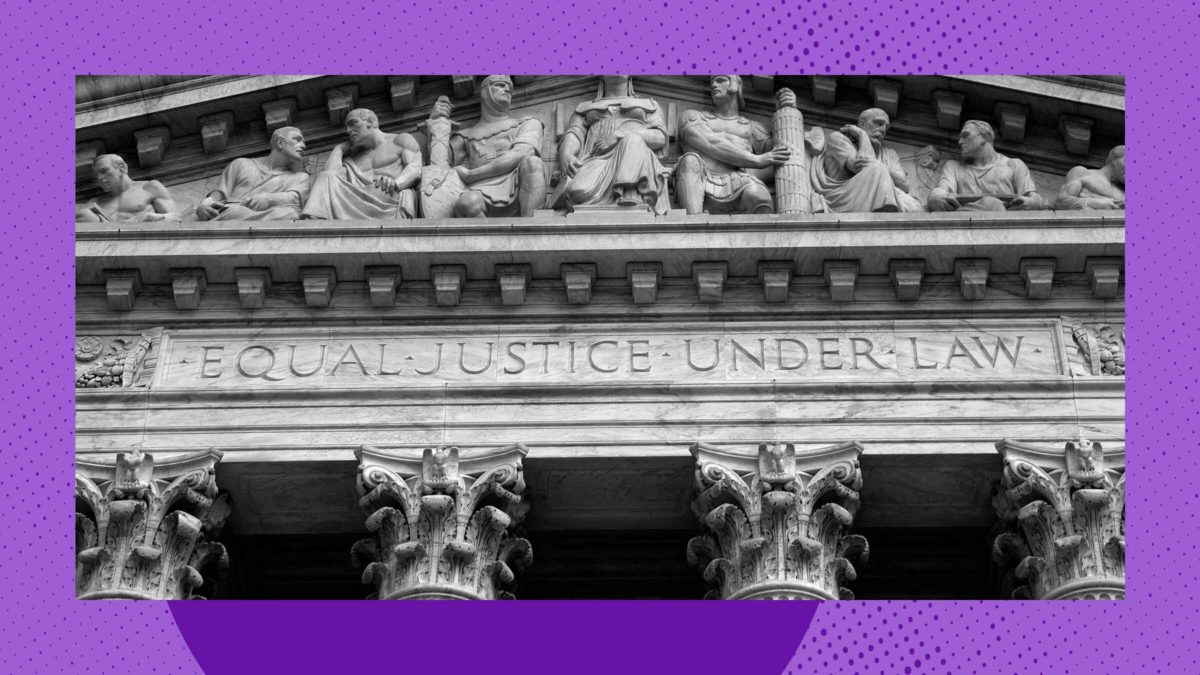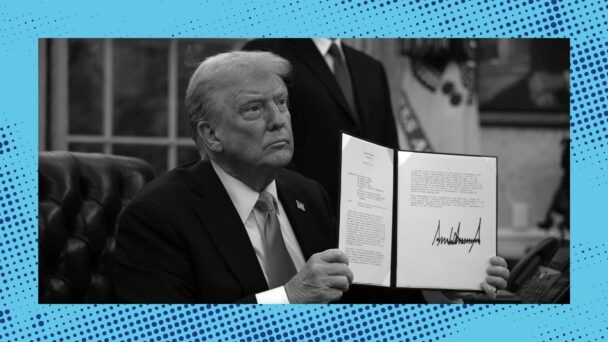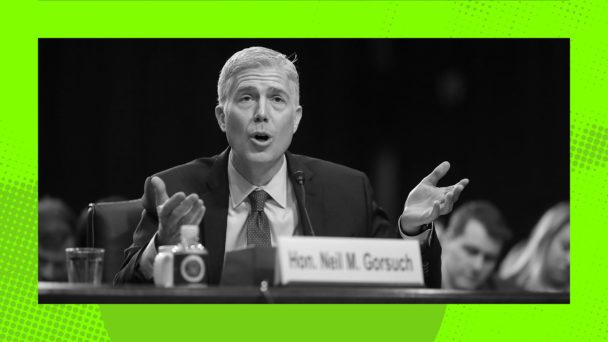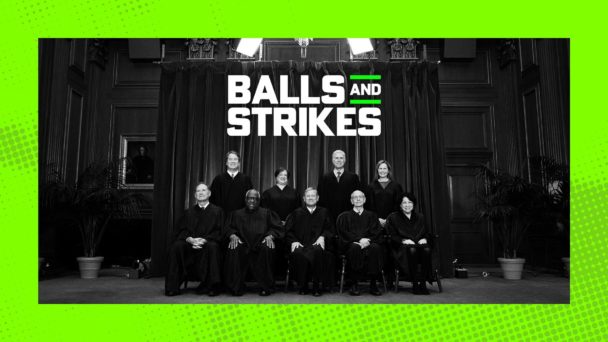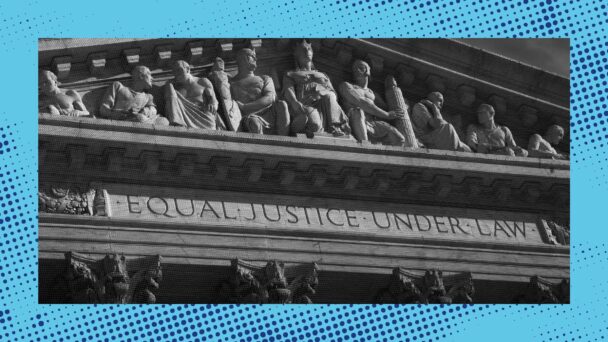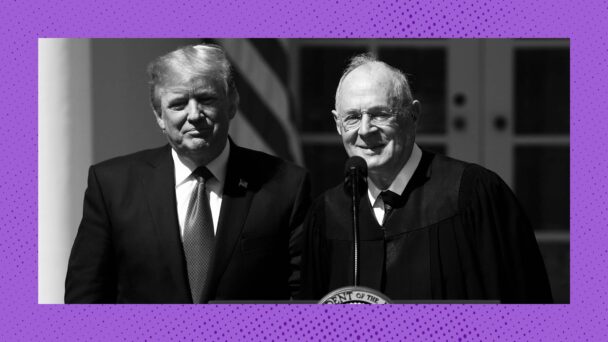Brando Simeo Starkey is the author of Their Accomplices Wore Robes: How the Supreme Court Chained Black America to the Bottom of a Racial Caste System, available June 3 wherever books are sold.
The presence of Black people in America has produced a centuries-long fight between two hostile forces. On one side exists caste preservationists—those who fight to maintain the eternal primacy of the white population. Caste abolitionists sit opposite them. They crusade for a country without a racial caste system—a hierarchy enforced through law, rules, and norms that confines the Black population to a subordinate legal, political, and social status, from womb to grave.
The Supreme Court of the United States mediates between the two. The ratification of the Thirteenth, Fourteenth, and Fifteenth Amendments, the three post-Civil War amendments, endowed the Court with the power to protect Black freedom from caste. The justices, however, have operated as caste preservationists’ most indispensable ally, conspiring with the enemies of Black existence, promoting the maintenance of a white-over-Black land.
Ignorance—the absence of knowledge—has functioned as an essential weapon the justices have wielded in furthering caste preservationism. Judicial decisions based on reading miscomprehension. Reasoning premised on misunderstanding of facts. Analysis laced with illogic.
Many legal observers overlook the utility of ignorance. They neglect how thinking premised on a want of information and intelligence can facilitate injustice. Yet ignorance has proven exceedingly helpful in promoting Black subjugation in a country that professes to believe in equality. Ignorance, nearly always a result of bad faith, allows malevolence to present as fairness.
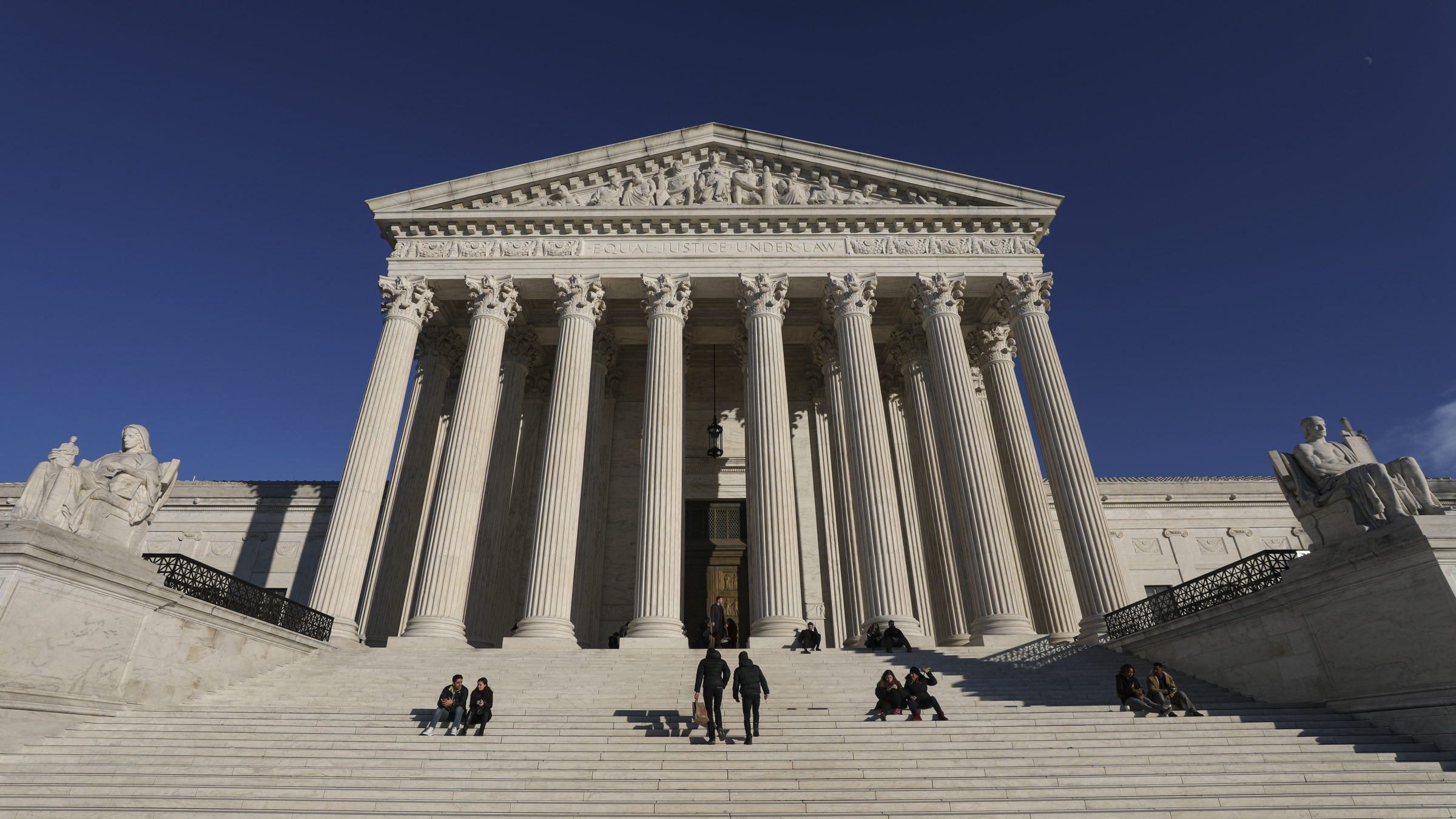
(Photo by Celal Gunes/Anadolu Agency via Getty Images)
One of the first post-Civil War Supreme Court cases concerning Black freedom provides an example of this phenomenon. In 1866, Congress, empowered by the Reconstruction Amendments, enacted a federal removal statute which allowed criminal defendants to remove their cases from state to federal court if the state court denied their constitutional rights. The Republican Party, which generally favored protecting freedpeople’s rights, feared that Southern state courts would refuse to honor Black legal equality. Congressional Republicans, therefore, created a process by which assumedly fairer federal courtrooms could assume jurisdiction over such cases.
Two teenage Black brothers, Lee and Burwell Reynolds, were facing prosecution for the November 1877 stabbing death of Aaron Shelton, a white man, in rural Taylorsville, Virginia. Shelton hit Lee with a stick and knocked him over a sawed-off log. Burwell, who was used to seeing male members of Shelton’s family assaulting his family, stabbed Aaron from behind with a tobacco knife. Shelton instantly fell and later died.
Virginia had no law formally barring Black jury service. However, in the brothers’ trials, Judge William Tredway, as was typical throughout Virginia state courts, barred Black men, by custom, from jury service. Lee and Burwell sought to remove their cases to federal court, and federal judge Alexander Rives granted their petition. “Was not [this] denial [of potential Black jurors], a denial to the prisoner of the equal protection of the laws?” asked Rives in his written opinion explaining his decision. After federal marshals took the brothers into federal custody, Virginia sued Rives to get them back.
Three years later, the Supreme Court settled the matter in Virginia v. Rives. Justice William Strong, writing the opinion for the unanimous Court, held that the Reynolds brothers had no right to transfer their cases to federal court. The removal statute, Strong said, “authorizes a removal of the case only before trial, not after a trial has commenced.” And since Virginia did not by law prohibit Black jury service, Black criminal defendants couldn’t know before the trial that a court would deny their right to an impartially selected jury panel.
The Court, though, plainly misread the removal statute, which provided that the removal petition must be filed “at any time before the trial or final hearing of the case.” The Court disappeared this phrase, effectively fading the statute’s virtue—it could force state courts to treat Black people equally throughout the entirety of the trial lest they transfer their matters to federal courts.
Thus, the black robes weakened a statute by misunderstanding its purpose and misreading its text. Ignorance, in other words, helped the Court write a caste preservationist decision.

Justice William Strong (Photo by Heritage Art/Heritage Images via Getty Images)
After having spent decades unleashing fraud and violence to keep the voting booth a whites-only space, Mississippi, in 1890, held a constitutional convention. Caste preservationists in the majority-Black state wanted to write a new constitution that disenfranchised Black men. The scheme the delegates adopted hinged on prohibiting or dissuading Black men from even registering to vote, because doing so required one “to read any section of the state constitution; or to be able to understand the same when read to him, or give a reasonable interpretation thereof.” For this hurdle, which became known as the Understanding Clause, the state would coach registrars to generally accept the performance of white, but not Black, prospective voters.
The Understanding Clause’s impact went further than voting, too: Per the new state constitution, only registered voters current on their poll tax payment could serve on juries. Thus, despite devising a scheme that did not explicitly discriminate based on race, the delegates intended to terminate Black participation in society, excluding them from juries even as criminal prosecutions of freedpeople skyrocketed.
A Black attorney named Cornelius Jones wanted to invalidate the new state constitution, and devised a strategy for doing so: He decided to represent Black criminal defendants, all charged with murder and sentenced to death. After all-white juries convicted them, he planned to convince the U.S. Supreme Court that Mississippi limited jury service to white men, infringing the Fourteenth Amendment’s Equal Protection Clause.
In court, he presented a simple argument: Mississippi, in violation of the Fourteenth and Fifteenth Amendments, denied Black men their right to vote on account of race, a scheme that also denied Black defendants their right to an impartially selected jury. Jones believed he could persuade the Court to cancel Mississippi’s disenfranchisement ploy and return the ballot to Black men’s hands.
The state supreme court decided Jones’s first two cases, Charley Smith v. Mississippi and Gibson v. Mississippi, in 1896, using obtuse arguments to reject his. The justices ignored the obvious—that the state had deliberately stripped Black men of their rights on account of race. The Court, instead, focused on the narrow issue of whether Jones proved with specific evidence that the jury commissioners—state officers entrusted with the task of selecting potential jurors—intended to exclude Black men from jury pools in the trials of his defendants. Because he presented no specific evidence proving intentional discrimination, the Court upheld his clients’ death sentences.
In his final try, Williams v. Mississippi, decided in 1898, Jones had damning corroboration of his thesis. In a separate decision, the state supreme court’s chief justice had admitted that the constitutional convention produced voting rules meant to disenfranchise Black men. Although the delegates were “restrained by the federal constitution from discriminating against the negro race,” Chief Justice Tim Cooper wrote, they had achieved the same result by instead “discriminating against its characteristics and the offenses to which its weaker members were prone.”
It should not have been challenging for the Court to deduce that the state intentionally disenfranchised Black voters. Yet in a unanimous decision rejecting Jones’s argument, Justice Joseph McKenna quoted this exact passage, and concluded that “nothing tangible can be deduced from this.” For a third time, because Jones did not establish that jury commissioners purposefully excluded Black men from the juries that indicted and convicted his client, the Court found no denial of constitutional rights.
Mississippi openly decided to violate the post-war amendments, and the black robes wrote opinions that pretending away basic facts—ignorant legal analysis.

(Photo by MPI/Getty Images)
Such instances of the Supreme Court harnessing ignorance to help preserve the racial caste system recurred throughout the 20th century and continues into the 21st, including in Parents Involved in Community Schools v. Seattle School District No. 1, a 2007 school integration case.
That controversy concerned the Seattle and Louisville education boards, which both pursued voluntary desegregation plans that considered race to facilitate a goal of Brown v. Board of Education—interracial educational environments. White plaintiffs from both cities sued, arguing that the race-conscious school assignment policies violated their rights under the Equal Protection Clause.
In an opinion written by Chief Justice John Roberts, the Court struck down both desegregation plans. Roberts’s opinion misconstrued both the NAACP lawyers’ arguments in Brown and the Brown opinion: According to Roberts, the two white plaintiffs from Seattle and Louisville who opposed measures that integrated schools suffered the same injury as did Linda Brown—their districts assigned them to a school based on race. Roberts is intently focused on stamping out state actions that classify individuals on the basis of race, which each school board concededly did here.
Yet equating the plaintiffs in Brown and Parents Involved provided a flagrant instance of ignorant legal analysis. The two white plaintiffs, on the one hand, experienced the disappointment of not attending their preferred school because their local representatives prized children attending school with kids from all walks of life. Linda, on the other hand, suffered the weight of the state deeming her racially inferior and engraving that into her young psyche. If Brown turned merely on “racial classification,” Black and White students in Jim Crow states endured comparable harms, since Jim Crow statutes classified white as well as Black students. But imagine if a white boy in the 1950s had sued. How would his lawyers have relayed his injury? That the board of education did not stack the deck enough in his favor?
Calling Brown a case about racial classification misinterprets one of the simplest opinions in the Court’s history, an opinion written plainly to allow even the unlearned to follow. Yet, the nation’s leading jurist put his name on something that argued Brown centered not on the state purposefully disadvantaging Black people, but rather on the state merely taking note of the students’ races when assigning them to schools.
Roberts reproduced blunders similar to those that sank Justice Henry Brown’s majority opinion in Plessy v. Ferguson, in which the Court upheld the “separate but equal” doctrine more than a century earlier. In that case, Justice Brown presented Louisiana’s Separate Car Act of 1890 as just another humdrum law, one unconnected to the hell engulfing Black existence.
His opinion misunderstood that the state legislature passed the act to enforce a racial hierarchy. Misunderstood how laws can legally confine a population to a lesser station. Misunderstood how laws can train the inferior caste into accepting that station. Misunderstood how this fortifies the caste system. Misunderstood that the caste system, helped by restricting the ballot, produces lawmaking that keeps the caste system’s blood flowing. Consider it a feedback loop for Black misery.
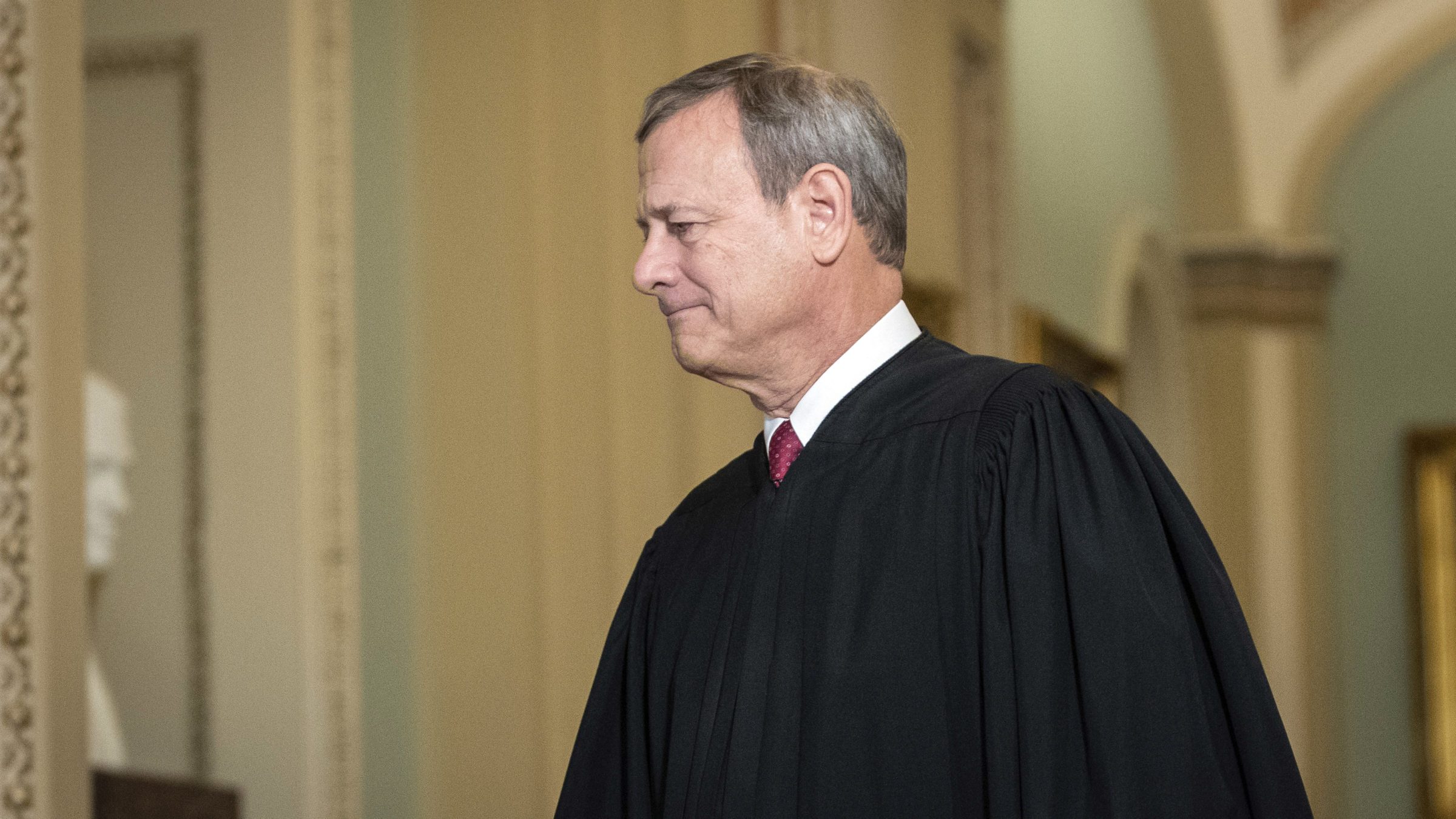
(Photo by Drew Angerer/Getty Images)
Of course, one might detect strategic deceit in both Roberts’s and Brown’s opinions. But the words also contain substandard analysis, confusion of history, cluelessness about methods of oppression, and an obliviousness to facts—all errors a careful jurist would never commit. Yet they did, and their colleagues co-signed them.
That Court observers rarely connect the Court’s deeply flawed race jurisprudence to ignorance demonstrates how this nation sees caste preservationist decisions as unremarkable and familiar—something perhaps warranting criticism, but not raising questions about whether the justices meet minimum cognitive standards. America must reckon with just how much the production of ignorant thought complicates the abolition of caste.
The judges would, publicly at least, dispute any nefarious motives. They can deny what they can hide, their inner thoughts. But they cannot hide the words they wrote. We see them.

